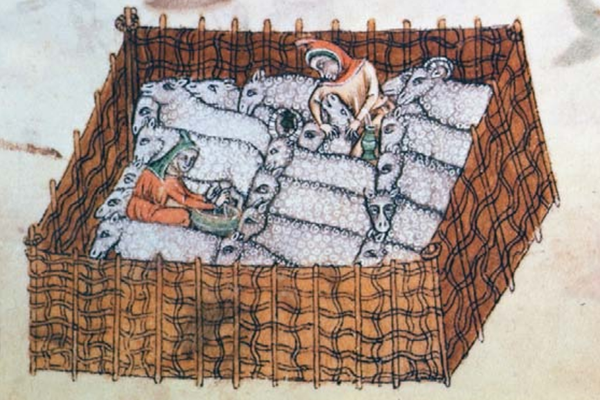Objects of Intrigue: The Drawing of the Whale That Became Moby Dick
1850 illustration of a whaling accident (via Wikimedia)
The colossal white whale of Herman Melville’s Moby-Dick wasn’t entirely fiction: whaling was a very serious, and often deadly, business, and the whales were not too keen to be hunted. The most notorious whale attack may be that of the whaleship Essex in 1820, an event which inspired Melville to write his 1851 tale.
The youngest member of the Essex crew would also be its last living survivor, and the lives of his perished fellow crew members actually helped he and the few others who made it back to shore to make it there alive. The then 14-year-old cabin boy Thomas Nickerson would relate the whole story in his 1876 book The Loss of the Ship ‘Essex’ Sunk by a Whale and the Ordeal of the Crew in Open Boats, which wasn’t published until 1980 after its 105 handwritten pages languished for years until they were recovered and donated to the Nantucket Historical Association.
1870 illustration of whaling (via Wikimedia)
It was on November 20, 1820, that the whaleship that had left Nantucket, Massachusetts found itself in the southern Pacific Ocean, with a pod of sperm whales in view. The ship’s three whaleboats were launched in pursuit, yet while they were hunting the whales a monster of a creature appeared heading towards the ship. It was said to be 85-feet-long and with quick shallow dives increased its speed for a complete collision with the Essex before diving down and attacking it from below, while the crew above swayed back and forth under its force. When it emerged it swam a short distance ahead of the boat before turning and ramming the Essex again, this time crushing its hull before disappearing under the waves. It was never seen again, and the ship itself then sank beneath the waves.
The crew members who survived the wreck soon found their ordeal wasn’t over. Ironically, the three whaleboats were kept away from the nearby Marquesas Islands for fear of cannibalism, as that is just what they had to resort to in order to save themselves during the over three months drifting at sea. First mate Owen Chase related the decision to eat a crew member in his own narrative of the journey:
Our provisions could not possibly last us beyond three days, within which time, it was not in any degree probable that we should find relief from our present sufferings, and that hunger would at last drive us to the necessity of casting lots. It was without any objection agreed to, and we set to work as fast as we were able to prepare it so as to prevent it spoiling. We separated his limbs from his body, and cut all the flesh from the bones; after which, we opened the body, took out the heart, and then closed it again — sewed it up as decently as we could and committed it to the sea. We now first commenced to satisfy the immediate cravings of nature from the heart, which we eagerly devoured, and then eat sparingly of a few pieces of the flesh; after which we hung up the remainder, cut in thin strips about the boat, to dry in the sun; we made a fire and roasted some of it, to serve us during the next day.
Thomas Nickerson’s drawing of the whale attacking the Essex (via Nantucket Historical Association)
Later in his life the once-cabin boy Nickerson sketched the attack, and his memoir on the days at sea would be used heavily by Nathaniel Philbrick for his 2001 book In the Heart of the Sea: The Tragedy of the Whaleship Essex. The Nantucket Historical Association, which also runs the Nantucket Whaling Museum, also holds a chest recovered from the wreckage of the Essex, maps and other documents related to the whaleship, a bit of twine made by the shipwrecked crew members, and even the eyeglasses of first mate Own Chase.
OBJECTS OF INTRIGUE is a feature highlighting extraordinary objects from the world’s great museums, private collections, historic libraries, and overlooked archives. See more incredible objects here >
















Follow us on Twitter to get the latest on the world's hidden wonders.
Like us on Facebook to get the latest on the world's hidden wonders.
Follow us on Twitter Like us on Facebook